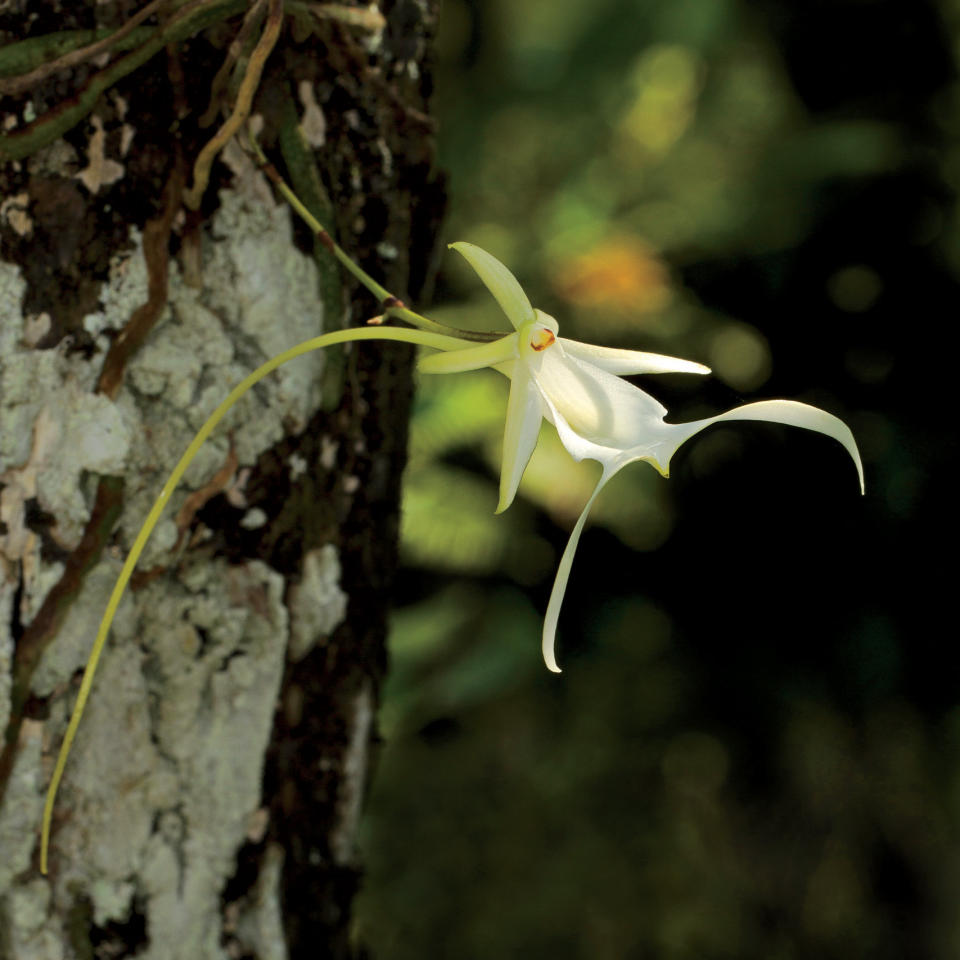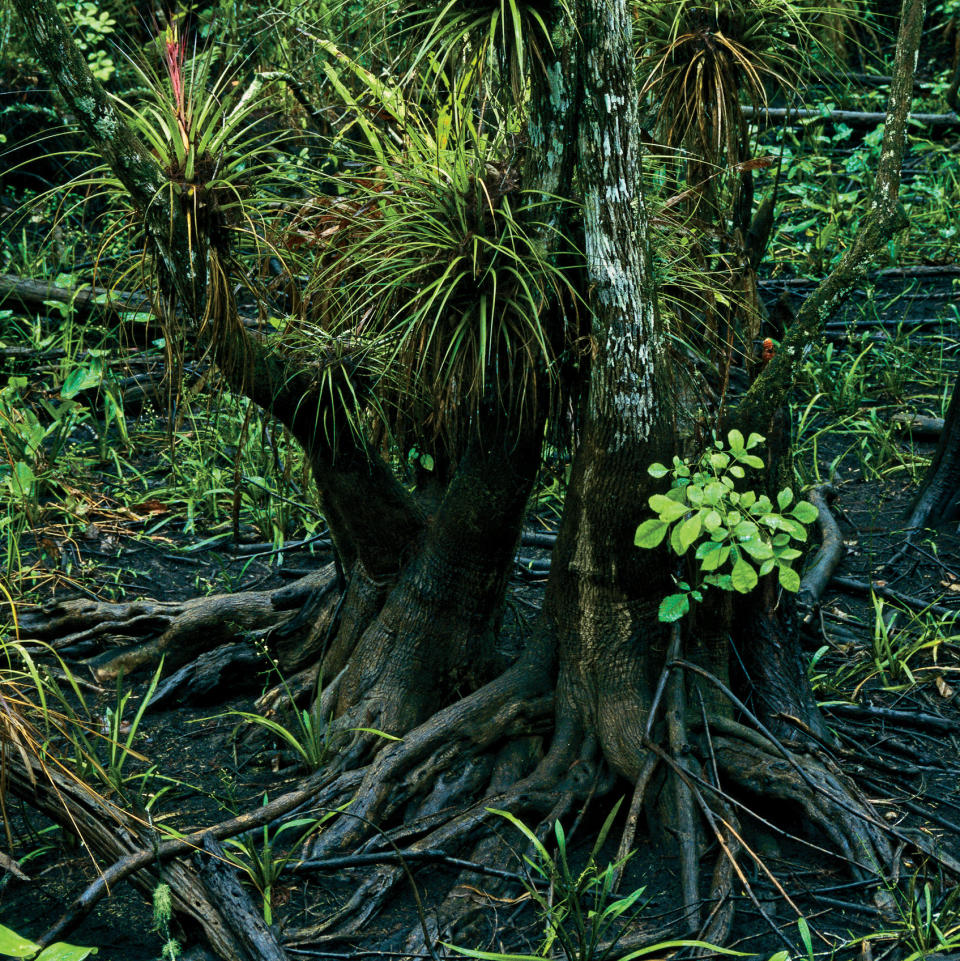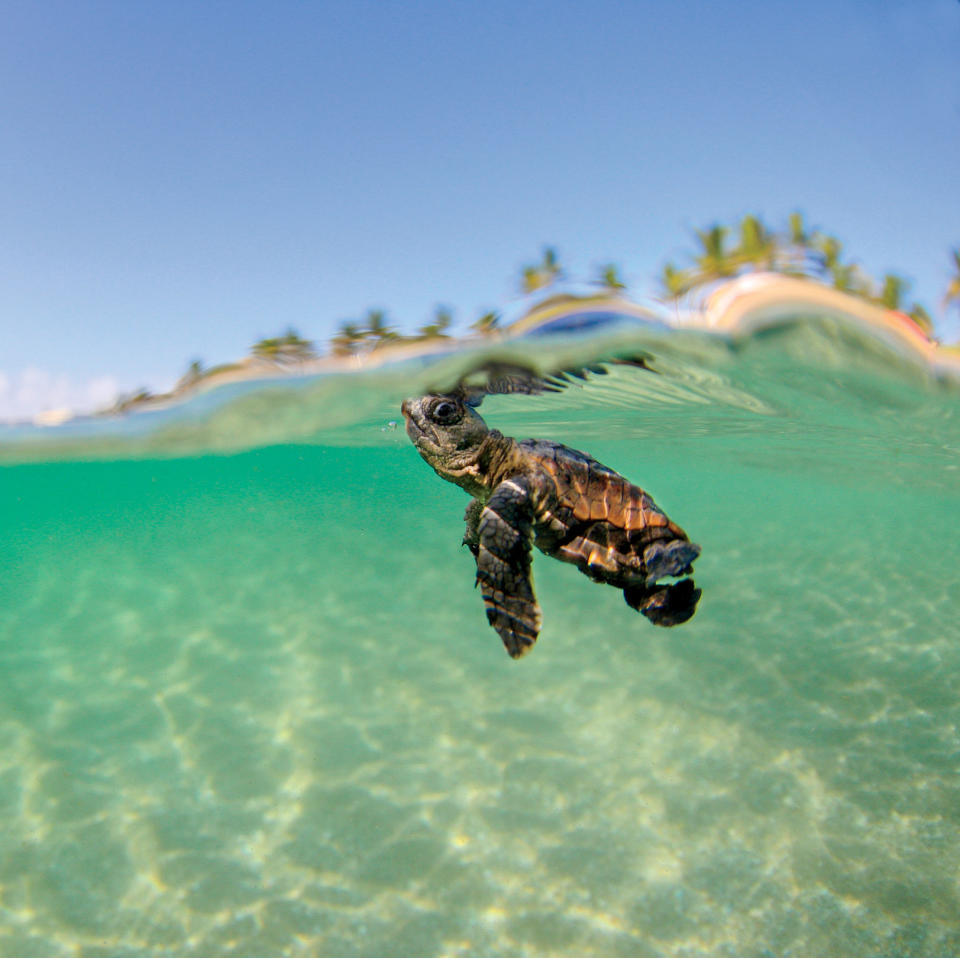Florida's Wild and Wonderful Gifts
As Christmas morning dawns over the long and low-lying blue-green peninsula called Florida, two miracles-one imagined, one real-unfold in the sky. Both of them bestow gifts.
The imagined miracle involves an old man and reindeer that gallop on air. The real one is this: High above a swamp in the western Everglades, anchored to the corded bark of an old-growth bald cypress tree, a ghost orchid draws energy to bloom. With pale petals hovering like spirits above delicate, near-invisible roots, with a beauty so ephemeral that it's been poached to the edge of existence, Dendrophylax lindenii clings to its host and blooms in the swamp's musky air. Protected now in Corkscrew Swamp Sanctuary, the ghost orchid blooms sometimes as early as January, and sometimes with as many as 40 flowers in the course of a year. It's the largest of its kind ever discovered.
This ghost orchid attracts not only human visitors, who glimpse it from the sanctuary's boardwalk, but also the only insect on Earth that can pollinate it: the giant sphinx moth. If Cocytius antaeus finds and dusts the ghost orchid while it's blooming, the plant will drop a pod that offers the hope of progeny. These are long odds. It's remarkable that there are any ghost orchids left at all.


Ghost orchid (Maresa Pryor) and Corkscrew Swamp Sanctuary (Klaus Nigge)
Call it a gift-a miraculous one-springing from a wild, wet corner of the world that overflows with strange and beautiful abundance. From creatures so small that they remain unseen to vast networks of coral ranging offshore for hundreds of miles, Florida is a parade of nature so varied that cataloging those gifts may best be done from the sky.
See it from the vantage point of one of more than 500 species of birds-warblers and waterfowl, eagles and hawks, storks and ibis-that make Florida home or a place for rest and sustenance during long and strenuous migrations. Imagine skimming airborne above the state's narrow western handle, a ribbon of blindingly white sands backed by forests that hold two of the world's rarest species of evergreens. Wheel south and survey coastlines threaded by rivers and laced with mangrove-etched lagoons. Trace the parallel wonder-one on the Gulf of Mexico, one on the Atlantic Ocean-of hundreds of miles of narrow islands. Though called barriers, they might better be called nurseries: Their pale sands, mounded into dunes and spread along the shore, are the fragile nesting places of animals as diverse as least terns, just shy of two ounces, and leatherback sea turtles, sometimes half a ton. As the peninsula tapers southward, see how it begins to blend with the seas that surround it, becoming more water than earth. See that strand of cays dangle, like an unfinished thought, from land's end.
Those 1,350 miles of coastline, lined with glamorous beaches and tropical foliage, might feel like holiday department store windows full of Florida's finest wares. But the most important gift lies in the interior. The Seminole Indians named it Big Water: Okeechobee. Covering 730 square miles, the state's largest lake fills with freshwater flowing south through Florida limestone. And, like hands cupped heavenward, it catches the rain from thunderheads that pile up and unleash during long wet seasons.
And it overflows.
Breaching Okeechobee's southern shore, there emerges a river as shallow as six inches and as broad as 60 miles. Originally, it crept south unimpeded across almost 11,000 square miles of marsh, sliding over sawgrass and around cypress, pushing through mazes of mangroves to flow onto the sea grass flats of Florida Bay.


Red mangroves (Carlton Ward) and white ibis (Paul Sutherland)
For millennia, that landscape spawned hundreds of species that developed fragile relationships among each other and with their environs. The Everglades became a swampy Eden, a natural kingdom beyond the ken of poets. Legions of thin-legged wading birds stalked the flats; brown pelicans skimmed the shore in tight chevrons. Roseate spoonbills, tucking their coral-pink wings, swung their bills in quick arcs as if searching for dropped contact lenses. Thousands of thrushes and warblers filled marshes with birdsong. In the old world of the Everglades, snakes writhed and panthers stalked. Freshwater alligators and saltwater crocodiles shared brackish trails. Kites dropped from the sky to capture snails. Bottlenose dolphins lolled. And manatees, with underwater grace at odds with their clownish forms, left the cooling seas of winter behind them every year to seek the warmer springs of the interior.
Paradise found, yes, but then lost. Over time, aspiration took hold. Dikes were built along Okeechobee's southern rim. Rivers were yanked straighter and routed east and west. Humankind attempted to remake what was soggy and insect-infested into land that served. But it became much dryer land. Agriculture made the Everglades thirst, and the past century has been spent arguing over what's our right and what's our debt. Seventy years ago, 1.5 million acres of the Everglades were preserved in a national park. Since then, additional sanctuaries and preserves have helped forestall disaster.
But the future of the Everglades, and indeed all of Florida's rare creatures and their habitats, is held prisoner in the battle between man's quest for order and the instinctual ways of wildness. It can feel, at times, like a losing one for the wild. But nature surprises with her strength. The drive for survival against odds is profound to witness-itself a gift. And on the long beaches of Florida in the summer, it plays out every night.
Under slow-turning constellations, thousands of loggerhead, green, and leatherback sea turtles emerge from the ocean and lumber up damp sands. They are heavy-in bulk, with eggs, and with the threat of extinction. In a ritual as inexorable as the tide, mother turtles dig pits for their own bodies, and then deeper holes beneath. Into those chambers they lay around 100 Ping-Pong ballsized eggs, and then labor to cover their cache. Sapped of energy, they pause, gather strength, and make for the sea with what can only be viewed as relief.
Two months later, life emerges. The size of skipping stones, hatchlings use their tiny flippers and indomitable drive to climb up the discarded shells of their incubation, up through the sand, into the wide and dangerous world. Called by instinct toward light created by moving water, they skitter down their mothers' paths to the sea. One in about 1,000 will survive to adulthood. And if female, despite roaming the ocean for hundreds of miles, she will return to the beach of her birth to lay her own eggs. She will return to Florida, trusting that it will be there for her, and for another generation. She will endeavor to give the most meaningful gift she can offer.
Her wildness, and the sheer miracle of it all.

Loggerhead sea turtle (Boca Raton Photography and Design)
HOW TO HELP FLORIDA'S WILDLIFE
These organizations are tops for supporting flora and fauna that's in need of protection.
West Indian Manatee
Join the Save the Manatee Club, an organization founded by Jimmy Buffett and former Florida governor Bob Graham.
Florida Scrub-Jay
Join Jay Watch, a citizen organization devoted to protecting Florida's only endemic bird that teeters on the edge of extinction.
Sea Turtle
The Sea Turtle Conservancy, based in Florida, supports conservation and education efforts worldwide.
Florida Panther
Protect critical habitat for this endangered species through The Nature Conservancy's Florida panther initiatives: Text the word PANTHER to 97779 to make an instant donation.
Everglades Snail Kite
Adopt this endangered species through the Audubon Center for Birds of Prey Adopt-A-Raptor program.

Everglades snail kite (Carlton Ward). All photographs National Geographic Creative


